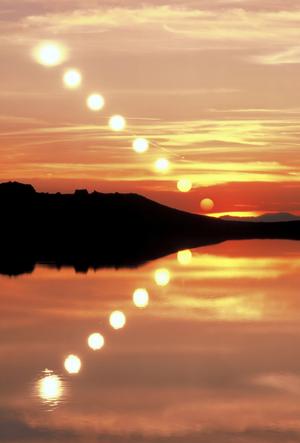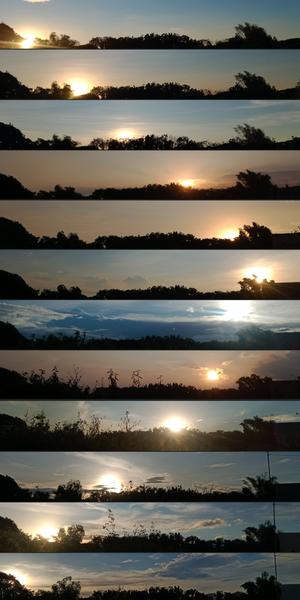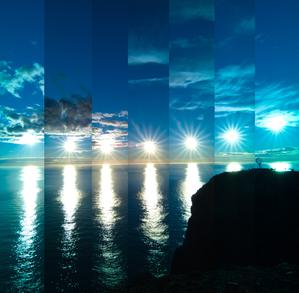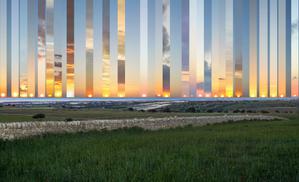Glossary term: Sun Path (Day Arc)
Description: The Sun's path or day arc traces the apparent motion of the Sun in the sky, as seen by an observer at a fixed position on Earth. Each day, the path traces out an arc, starting with sunrise in the eastern part of the sky and ending with sunset in the western part. Only at the spring and autumn equinoxes does the Sun rise exactly due east and set exactly due west. At the winter solstice, the arc is shortest and lowest in the sky. From then on, the length of that arc, and with it the length of the day, increases, and each successive arc is higher in the sky than the day before, reaching maximum height, and maximum day length, at the summer solstice. This process then repeats in the opposite order, again reaching the shortest, lowest arc at winter solstice.
North of the Arctic Circle and south of the Antarctic Circle the Sun does not rise for extended periods in winter or set for extended periods in summer. Hence, they can have nights that last several months in the winter and days that last several months in the summer. During one of these polar days the Sun travels around the sky in a circle, moving from a high point at midday to a low point at midnight without ever crossing the horizon.
The set of solar arcs can be captured in a long-term exposure image called a solargraph.
Related Terms:
See this term in other languages
Term and definition status: This term and its definition have been approved by a research astronomer and a teacher
The OAE Multilingual Glossary is a project of the IAU Office of Astronomy for Education (OAE) in collaboration with the IAU Office of Astronomy Outreach (OAO). The terms and definitions were chosen, written and reviewed by a collective effort from the OAE, the OAE Centers and Nodes, the OAE National Astronomy Education Coordinators (NAECs) and other volunteers. You can find a full list of credits here. All glossary terms and their definitions are released under a Creative Commons CC BY-4.0 license and should be credited to "IAU OAE".
Related Media
The Last Hour of the Day
Credit: Fabrizio Melandri/IAU OAE (CC BY 4.0)
License: CC-BY-4.0 Creative Commons Attribution 4.0 International (CC BY 4.0) icons
Where the Sun Sets Every Month
Credit: John Paul Pile/IAU OAE (CC BY 4.0)
License: CC-BY-4.0 Creative Commons Attribution 4.0 International (CC BY 4.0) icons
The Eclipse Clock-Eclipse on a Polar Day
Credit: Stephanie Ziyi Ye/IAU OAE (CC BY 4.0)
License: CC-BY-4.0 Creative Commons Attribution 4.0 International (CC BY 4.0) icons
When the Sun Bounces
Credit: Milos Obert/IAU OAE (CC BY 4.0)
License: CC-BY-4.0 Creative Commons Attribution 4.0 International (CC BY 4.0) icons
The Path of the Sun
Credit: Frank Niessen/IAU OAE (CC BY 4.0)
License: CC-BY-4.0 Creative Commons Attribution 4.0 International (CC BY 4.0) icons
Solstices and Equinox
Credit: Tunç Tezel/IAU OAE (CC BY 4.0)
License: CC-BY-4.0 Creative Commons Attribution 4.0 International (CC BY 4.0) icons
Occasive Amplitude
Credit: Marcella Giulia Pace/IAU OAE (CC BY 4.0)
License: CC-BY-4.0 Creative Commons Attribution 4.0 International (CC BY 4.0) icons















